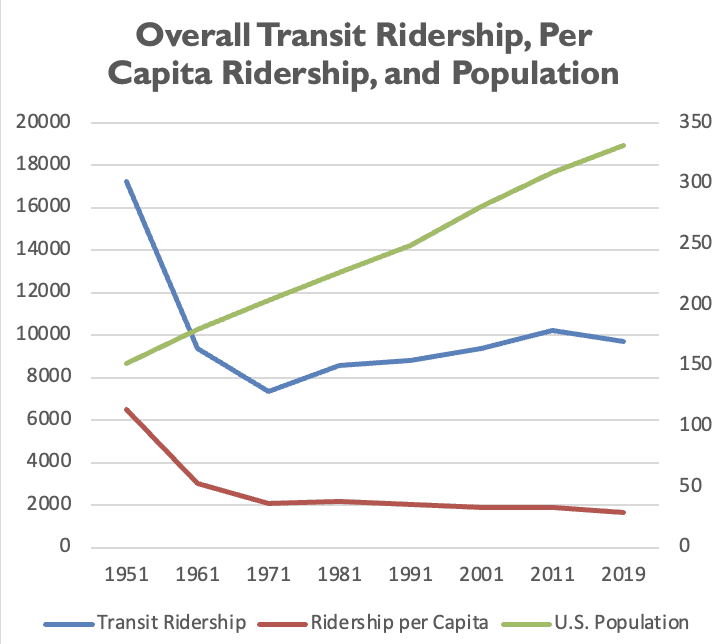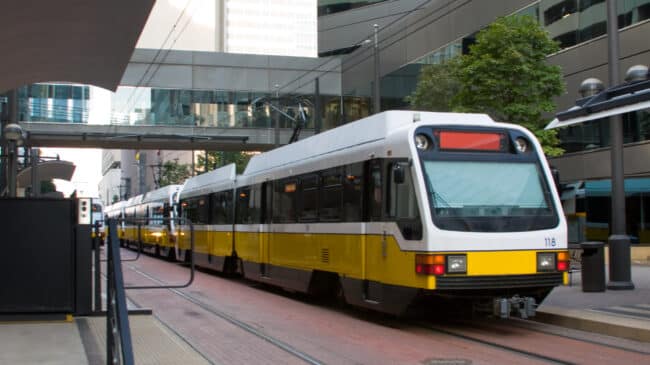Despite being its primary mission, most U.S. transit agencies fail to serve citizens without access to automobiles, also known as transit-dependent riders. Per capita transit ridership in the U.S. has decreased since World War II. The COVID-19 pandemic intensified that decline. In the future, instead of doubling down on failed strategies, such as having incumbent transit providers build new light-rail lines, U.S. metro areas need a new transit approach that is tailored to serving the needs of today’s workers.
Ways To Change Transit Service Design for the Better
- Adjust geographic coverage by redesigning existing bus routes to serve population centers, adding service on weekend days, and reducing it during off-peak periods.
- Improve bus-run times by consolidating stops and using technology to speed up trips, such as transit signal priority.
- Take a holistic approach that integrates fixed-route services, on-demand services, private services, bike-sharing, ridesharing, and (eventually) automated vehicles.

Improving Transit Governance
- Transition most transit agencies into mobility management agencies that coordinate services across public, private, non-profit, and contracted transit entities.
- Contract with quality private and non-profit operators wherever possible, as other developed countries do.
- Eliminate laws that prevent competition and protect transit monopolies.
- Improve accountability and transparency by setting performance goals to be met by all transit providers.
Changing Transit Funding
- Eliminate federal transit subsidies for capital projects and provide subsidies for operations and maintenance in ways that reward transit agencies that provide high-quality, low-cost services.
- Provide user-side subsidies to transit-dependent customers that allow them to use the vouchers or funds on whichever transit service is best for them.
- Charge transit-choice riders—those with access to another transport mode—the full price of providing the transit services to them.

